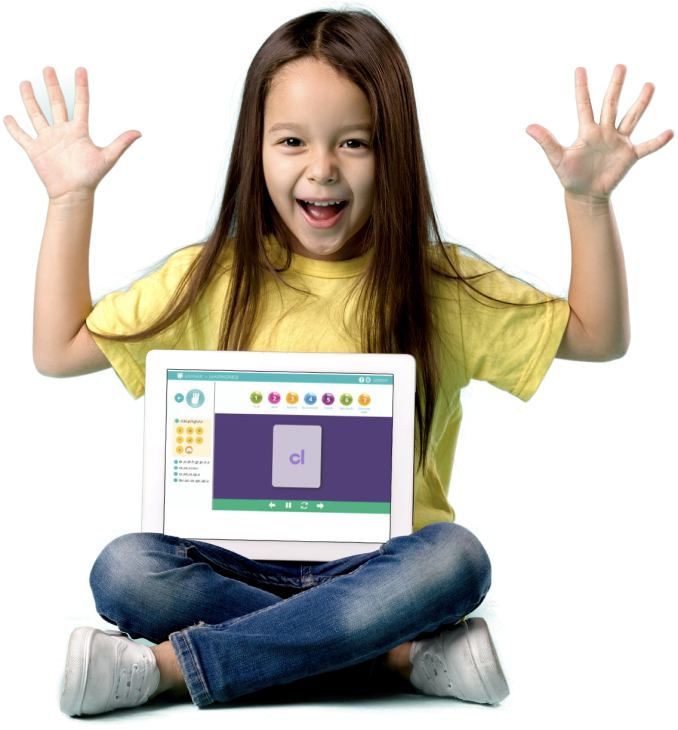WE SPECIALIZE IN SPECIAL NEEDS
Visual Processing Disorder
Grades preK-12
- Visual Processing Disorder treatment
- Testing for visual processing disorder
- Reading therapy
- Phonics-based systems
- MaxScholar Software
- Phonological approach
CONTACT USfor more info
Accelerate Your Child's Learning with One-on-One Tutoring
Accelerate Your Child's Learning with One-on-One Tutoring
Visual Processing Disorder (VPD), also called Perceptual Disorder, impedes a child's ability to make sense of information taken in through his or her eyes. This situation is very different from problems involving sight or sharpness of vision.
Symptoms of VPD:
- Spatial relationships: This refers to the position of objects in space and the ability of a child to perceive objects in space relative to other objects. Reading and math are two areas where precise perception and understanding of spatial relationships are very significant. Both of these subjects rely heavily on the use of symbols (letters, numbers, punctuation, and math signs). Examples of how this difficulty may interfere with learning include:
- the inability of a child's being able to perceive words and numbers as independent units
- directionality problems in reading and math
- difficulty with discrimination of similarly shaped letters, such as b/d/p/q.
- lack of a child's ability to perceive that certain digits go together to make a single number (i.e., 14) and that others are single digit numbers.
- lack of a child's ability child to identify that operational signs ( +, -, x, = ) are clear from the numbers and to prove a relationship between them. The only cues to such math problems are the spacing and order between the symbols.
- Visual discrimination: This refers to the ability of a child to discriminate objects based on their individual characteristics. Visual discrimination is fundamental to the recognition of common objects and letters. Attributes which children use to recognize different objects include: color, form, shape, pattern, size, and position. Visual discrimination also refers to the ability of a child to be able to recognize an object as distinct from its surrounding environment. In terms of reading and mathematics, visual discrimination difficulties can impede with ability of a person to correctly identify letters and symbols, gain information from pictures, read left to right, or being able to use visually presented material in a productive way. Often, reading fluency is low.
- Object recognition (Visual Agnosia): Some children are unable to visually identify objects commonly known by them, or even objects which they can distinguish through their other senses, such as, touch or smell.
- Visual-Motor Integration: This condition is a common obstacle for certain children. This term refers to the capacity of using visual cues (sight) to guide the child's movements. This refers to both gross motor and fine motor tasks. Often children with this stumbling block have a hard time familiarizing themselves in space, especially in relation to other people and objects. These are children who are often called "awkward" or "clumsy." Difficulty with fine motor integration influences a child's writing, organization on paper, and the ability to convert between a worksheet or keyboard and other necessary information which might be in a book, on a number line, graph, chart, or computer screen.
Specializing in:
- Visual Processing Disorder treatment
- Testing for visual processing disorder
- Reading therapy
- Phonics-based systems
- MaxScholar Software
- Phonological approach
Serving Miami-Dade, Broward, Palm Beach, and Monroe Counties.
Levy Learning Center visual processing disorder training institute also provides visual processing summer school for students, giving them a much-needed boost for the following school year.
How can MaxScholar help?
- MaxPhonics kinesthetic writing drills help to correct reversals.
- MaxPhonics helps with left to right tracking of word lists, and to improve fluency with word-per-minute timings.
- MaxReading, Level K, helps with interpretations of pictures.
- MaxPhonics helps object recognition since letters are presented in a visual, visual, and kinesthetic way.
- MaxReading helps visual motor speed since the child learns to maneuver the mouse to highlight text. They also write summaries from highlighted text.
- MaxPhonics teaches correct letter formation through the visual and kinesthetic modality.
If you know someone who has challenges with visual processing disorder, we strongly encourage you to take the following steps:
- Contact levy Learning Center (305) 496-7208.
- Arrange an assessment or free screening.
- Enroll for intervention tutoring.


